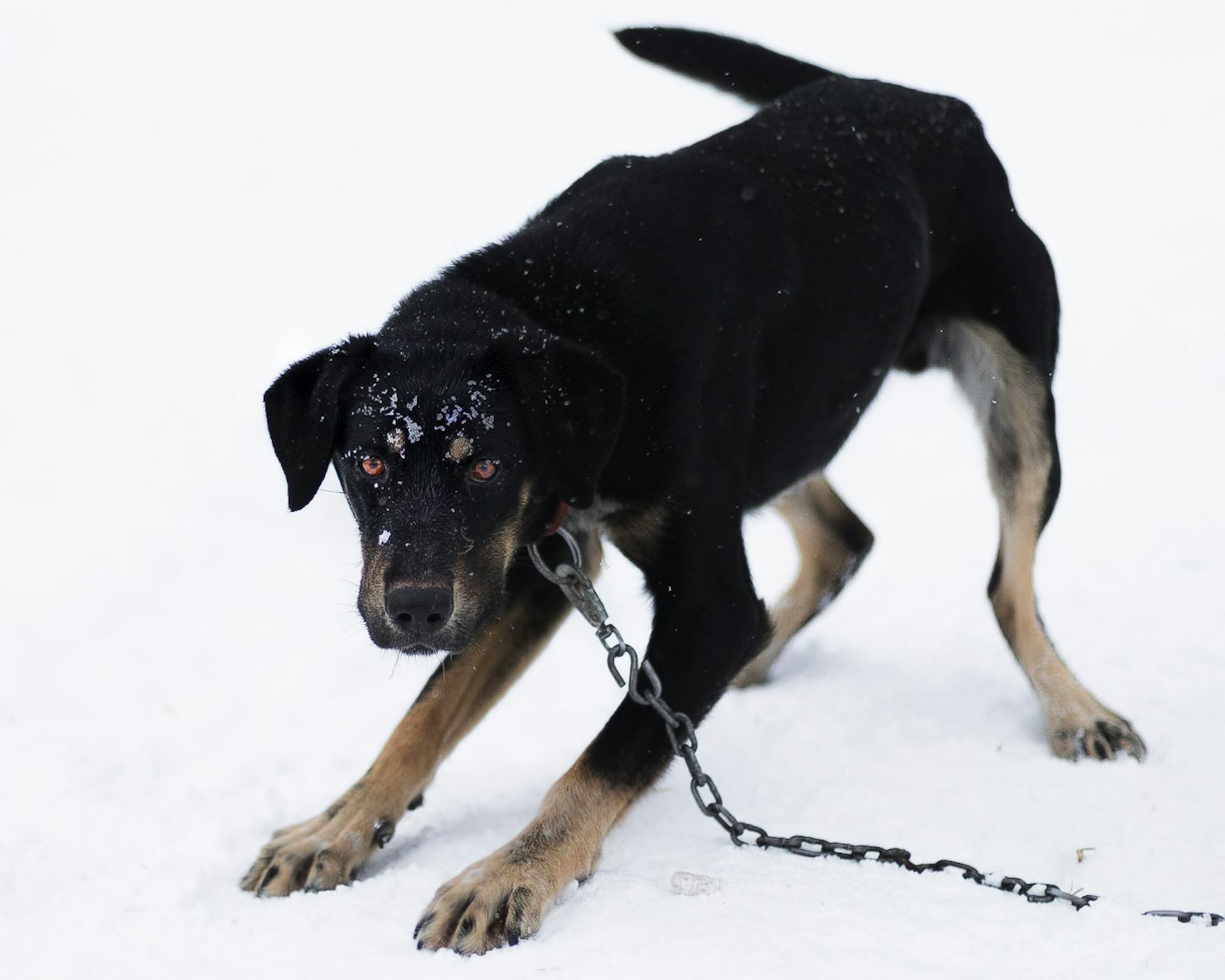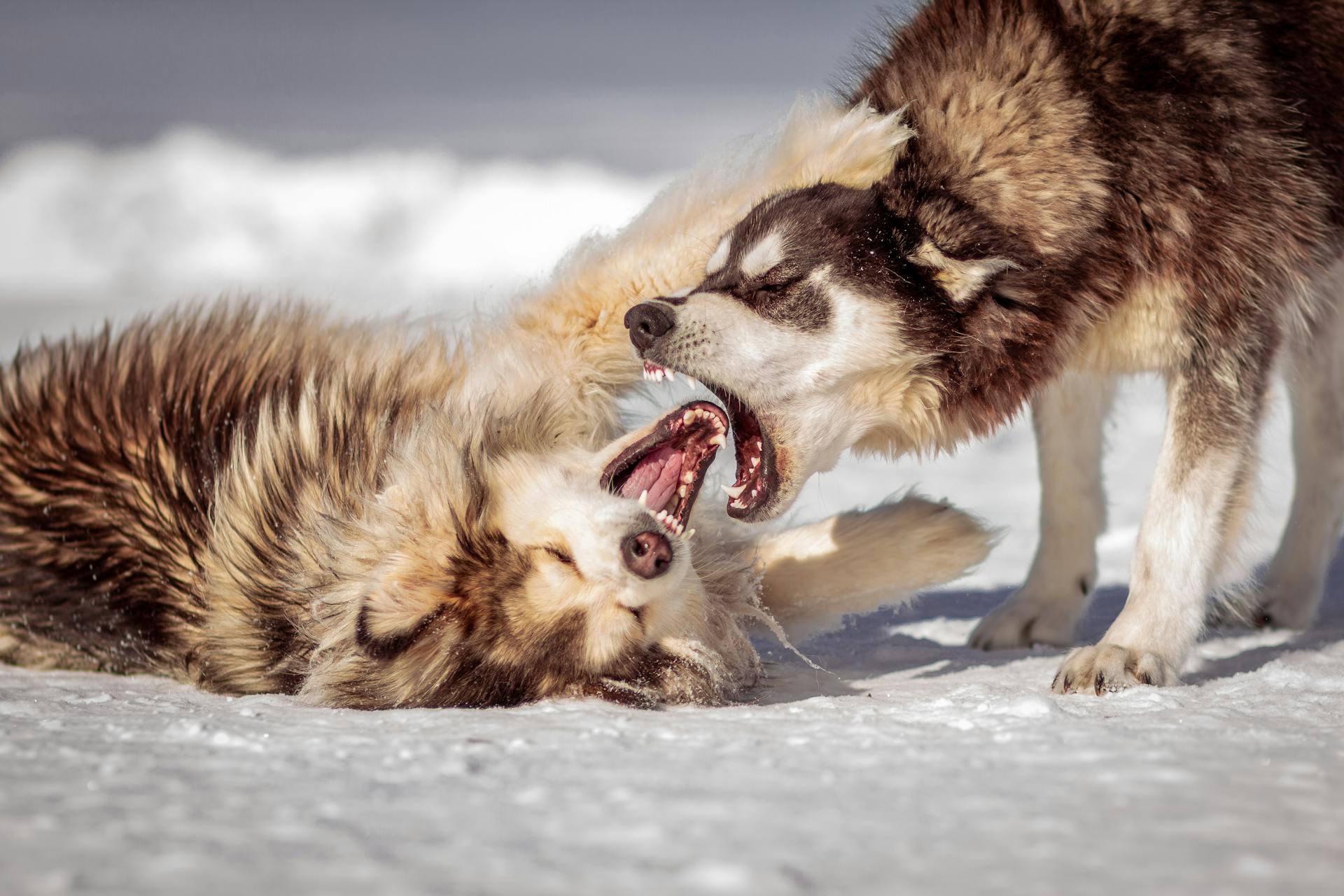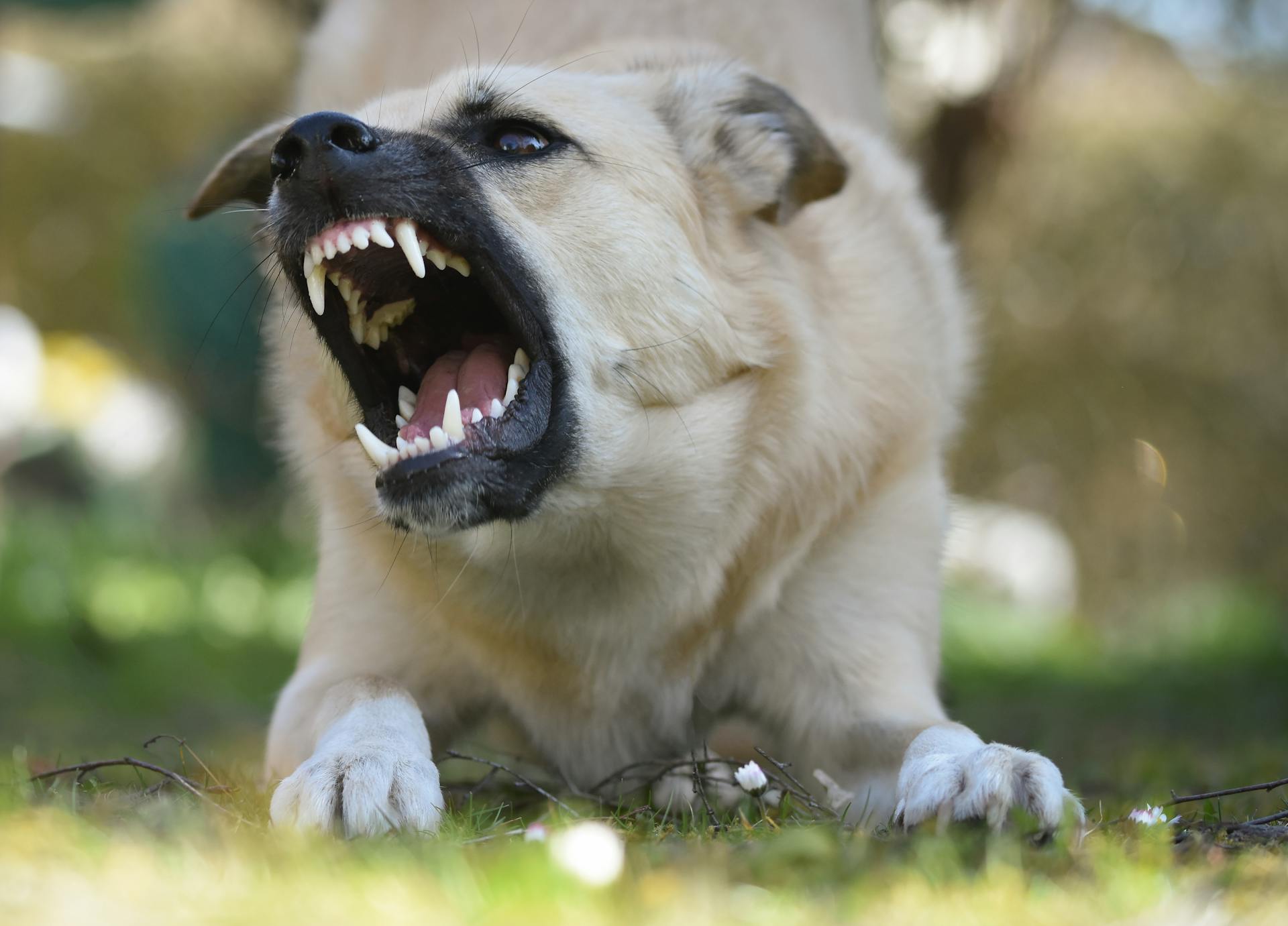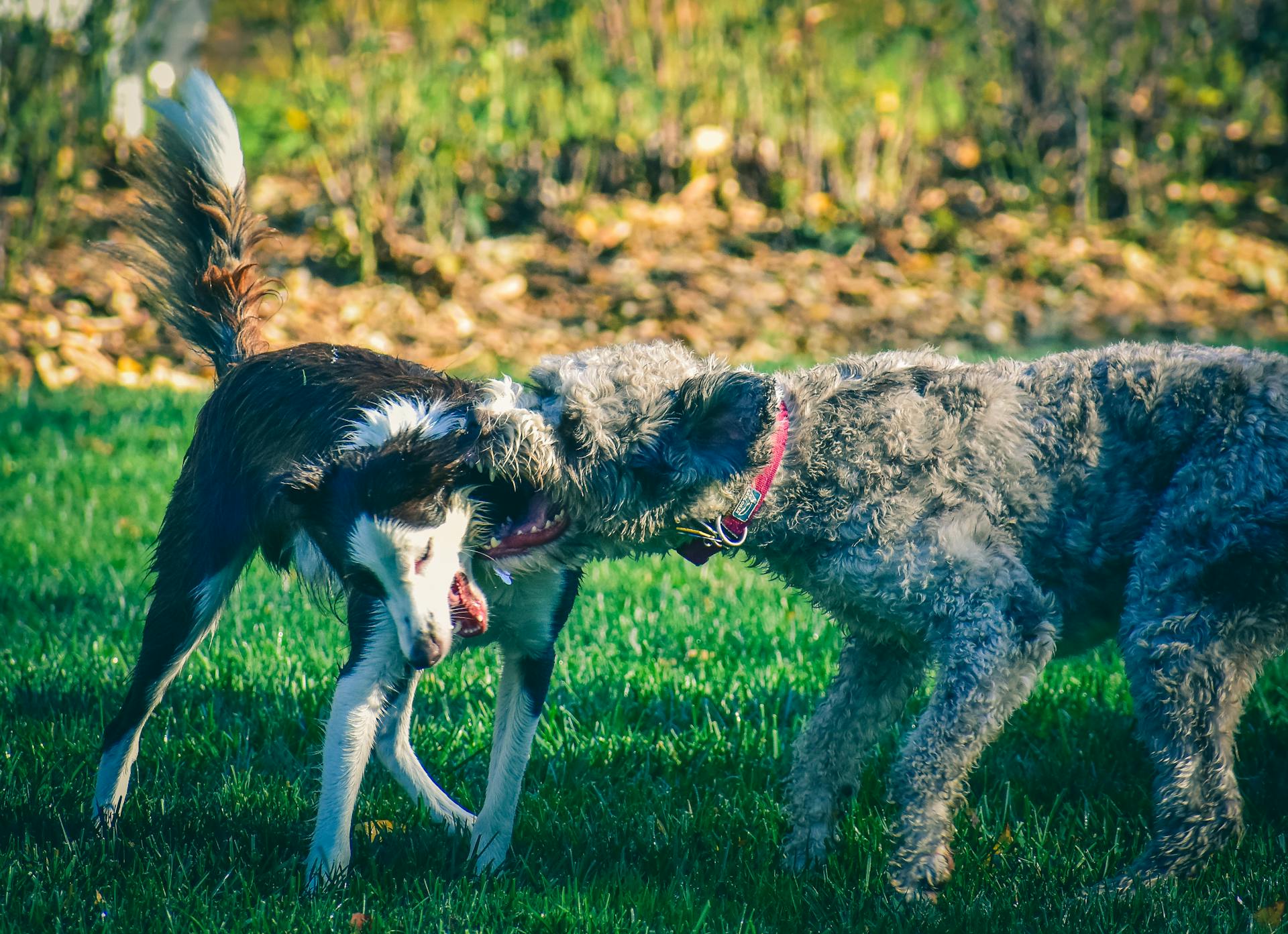
Understanding dog aggression is crucial for both dog owners and professionals. According to research, up to 80% of dog bites are preventable with proper training and management.
Identifying the underlying causes of aggression is key to effective prevention and management. By recognizing the early warning signs, such as raised hackles or growling, owners can intervene before the situation escalates.
Proper socialization is essential for preventing aggression in dogs. Socialization should start early, ideally from 8-11 weeks of age, and continue throughout the dog's life.
Understanding Dog Aggression
Understanding dog aggression requires a nuanced approach. Aggression in dogs is not just about biting, but also includes behaviors like growling and barking.
A dog's level of aggression is often determined through temperament testing, such as the American Temperament Testing Society test. These tests present dogs with different stimuli to assess their behavior in various situations.
Prey drive is another important factor to consider, as a dog with a high prey drive may act on their hunting instincts when confronted with small animals. However, this doesn't mean they are aggressive towards humans.
A dog's bite force can range dramatically across different breeds, and is a significant factor in assessing their capability to protect or potentially cause harm. Some dog breeds with strong bite forces include the Rottweiler, German Shepherd, and American Pit Bull Terrier.
However, a dog's bite force alone does not determine its temperament or behavior. Responsible ownership, proper training, and socialization are crucial in ensuring the safety and well-being of both dogs and humans.
A high bite force does not necessarily indicate aggression, and a dog's aggression is impacted by multiple factors, including training and socialization.
Here are some dog breeds that can make good pets with proper training, despite being considered "aggressive" breeds:
- Rottweiler
- German Shepherd
- American Pit Bull Terrier
- Kangal
- Cane Corso
- Dogo Argentino
- Tosa Inu
Ultimately, it's essential to remember that any dog can have aggressive tendencies, and it's up to the owner to provide proper training and socialization to ensure their pet's well-being.
Aggressive Breeds
Some breeds are often labeled as aggressive, but it's essential to remember that any dog can be aggressive, and you can't always tell a pup's personality by looking at them.
Certain breeds have displayed tendencies to be rougher than others, including Rottweilers and Wolfdogs, which possess high bite force measurements. These breeds may require a particular understanding and approach.
Early socialization and consistent training by a firm owner is critical to ensure your pet learns to distinguish normal interactions from threatening situations. This is especially true for breeds with a reputation for aggression.
No matter which breed you're considering, it's crucial to do your research and consider asking local veterinarians and pet trainers for their input. This will help you make an informed decision about whether a particular breed is right for you.
Most individual dogs of so-called aggressive breeds can make good pets with proper training, but some dogs' aggressive tendencies may never be fully overcome. It's essential to consider whether you're able to provide the necessary discipline and attention.
A dog's breed is not the only determining factor in its aggression level; individual temperament and genetics play a significant role as well.
Consider reading: Dog Breed Lifespan Chart
Aggression Chart
The Aggression Chart is a useful tool to identify the underlying causes of your dog's aggression.
Dogs exhibiting fear-based aggression often display avoidance behaviors, such as cowering or hiding, according to the article's examples.
Resource guarding, a type of aggression, can manifest in dogs that feel possessive about their food or toys.
Reactivity Chart: Threshold Levels
A dog's reactivity level is a crucial aspect to understand when dealing with aggression. It's essential to recognize the different threshold levels of reactivity.
The orange zone is a critical threshold where a dog's reactivity becomes more pronounced. In this zone, a dog may display stiff body language, raised hackles, and a strong focus on their trigger.
Here are the specific signs to look out for in the orange zone:
Keep in mind that a dog's reactivity level is not solely determined by its bite force. A high bite force does not necessarily indicate aggression, and socialization and training play a significant role in a dog's behavior.
Expand your knowledge: Why Do Chihuahuas Bite
Pit Bull Terrier
The American Pit Bull Terrier is a breed that's often misunderstood. They're known to be stocky and muscular, with a lifespan of 12-16 years.
Their average weight is 40-54 pounds for females and 55-70 pounds for males. This is likely due to their breeding history, which was influenced by their use in dog fighting.
Here are some key stats for the American Pit Bull Terrier:
It's worth noting that while they may be genetically predisposed to aggression, it's rare for an American Pit Bull Terrier to show aggression towards their family, especially if they've been properly trained.
Siberian Husky
Siberian Huskies are known for their athletic stamina, but they also require a lot of daily physical and mental stimulation to prevent frustration and aggression.
Their endless energy can cause them to go after small neighborhood animals, so caution should be taken with other household pets.
Siberian Huskies have unpredictable personalities, making it essential to approach them with caution, especially children and strangers.
If you're considering bringing a Siberian Husky into your family, be prepared to provide daily exercise and mental stimulation to keep them happy and calm.
Here's a breakdown of some key characteristics to keep in mind:
If you're willing to put in the work, a Siberian Husky can make a wonderful companion, but it's crucial to understand their needs and characteristics to ensure a happy and harmonious household.
Rottweiler
Rottweilers can be loving, affectionate family dogs or aggressive protectors, depending on their upbringing.
Their thick, stocky frame can top 150 pounds, making them a formidable presence.
Rottweilers are naturally protective and territorial, qualities that can be exploited if not properly managed.
They tend to have problems with other dogs, especially in households with multiple pets, due to their high prey drive.
In the right environment and with proper socialization, Rottweilers can be great companions, but they'll do best in a home where they're the only pets.
Jack Russell Terrier
Jack Russell Terriers have a lifespan of 13-15 years, which means they can be a long-term companion if properly cared for. They are relatively small, weighing between 9-17 pounds and standing at 10-15 inches tall.
Their small size can be deceiving, as they can display aggressive protective behavior, especially when it comes to their owners and personal property. Establishing boundaries early on is crucial to prevent this behavior.
As the owner, you play the role of the "pack leader", and showing your pup who's in charge can help prevent them from trying to supersede the pack order. This is a key aspect of their training and socialization.
Here's a breakdown of their physical characteristics:
Chihuahua
The Chihuahua breed is often misunderstood due to their small size. They can live for 14-16 years and weigh between 3-6 pounds.
Chihuahuas are known for their big attitude, which can sometimes be misinterpreted as aggression. They tend to form strong attachments to one family member and can be fiercely protective of them.
Their average height is 5-8 inches, making them one of the smallest breeds on this list. This small size can sometimes lead to inadequate training, which can exacerbate aggressive behavior.
Here are some key statistics about Chihuahuas:
Chihuahuas can be intolerant of boisterous children and are often nippy, making them a less-than-ideal choice for families with small kids.
Shar Pei
Shar Pei is a breed with a long history, dating back to the Chinese Han dynasty, some 2,000 years ago. They were originally bred as guard dogs, hunters, and pit fighters.
Shar Pei's lifespan is relatively short, ranging from 8-12 years. This makes it essential to provide them with proper care and attention throughout their lives.
Their average weight is between 45-70 pounds, and they typically stand between 18-20 inches tall. This size can make them a great fit for some families, but not necessarily for all.
Shar Pei's history as fighters can sometimes manifest in aggression towards other dogs and humans. This is especially true if they're not socialized properly.
Here's a quick comparison of Shar Pei's size and lifespan:
Aggression Chart

If you're considering getting a dog with a strong protective instinct, it's essential to understand their potential for aggression. Doberman Pinschers, for example, have a reputation for being aggressive towards strangers due to their fear or protective nature.
Some breeds are naturally more aggressive than others. The Cane Corso, with its robust nature and strong bite force of 700 PSI, requires consistent training and socialization to avoid potential harm.
Cane Corsos, in particular, are known to be guard dogs that take their role to the extreme, making them unlikely to become comfortable with strangers. They also have a high prey drive, so they need to be strictly confined to prevent them from harming smaller pets.
Bullmastiffs, on the other hand, have guarding instincts that can cause unwanted behavior and aggression if not properly trained and socialized. However, they are relatively easy to socialize and can grow up to be friendly and laid-back animals.
Discover more: Strongest Dog Names

Here's a comparison of the breeds mentioned, highlighting their potential for aggression and required training:
Keep in mind that any dog can become aggressive if not properly trained and socialized. It's crucial to understand the breed's characteristics and needs before bringing one home.
Argentino
The Argentino is a breed that's not for the faint of heart. They were originally bred in Argentina to hunt large animals like puma and boar.
Their aggressive tendencies are well-documented, which is why they're banned in the UK.
You can still train them to be loyal and friendly, but it takes a lot of work and socialization.
Boxer
Boxers are high-energy dogs that need a lot of exercise. They can become bored or frustrated if they don't get enough exercise, which can lead to aggressive behavior.
Boxers typically live for 10-12 years. Their lifespan is relatively short compared to some other breeds.
They come in two sizes, with females weighing 50-65 pounds and males weighing 65-80 pounds. This size difference is worth considering if you're planning to bring a Boxer into your home.
Boxers are generally around 22-24 inches tall for females and 23-25 inches tall for males. Their height is an important factor to consider when deciding on a breed.
If properly trained and exercised, Boxers can be fantastic family dogs.
Pomeranian
Pomeranians typically live for 12–16 years, which is a relatively long lifespan for a small breed. They usually weigh between 3–7 pounds and stand at an average height of 6–7 inches.
These tiny dogs can be easily intimidated by larger animals and people, which may lead to aggression. Pomeranians need to know their place in the pack to feel secure.
A Pomeranian's aggression can be caused by confusion about the pack order, leading to stress and aggressive behavior. If they recognize you as the leader, they'll feel more at ease.
Here are some key facts about Pomeranians:
Akita
Akita is a large, Japanese breed often used as a police or guard dog due to its protective nature. They can be wary of strangers and make overly vigilant watch dogs if not well-socialized.
Akitas can be aggressive toward other dogs if not properly socialized at a young age. This is because they may not learn to differentiate safe animals and people from legitimate threats.
Their protective instincts can be both a blessing and a curse. If you're considering bringing an Akita into your family, be prepared for a lifelong commitment to training and socialization.
Discover more: American Akita Aggression
Canarian Mastiff

The Canarian Mastiff is a breed that requires a firm and experienced owner. They were originally bred in the Canary Islands as a herding dog for cattle and pigs.
This breed needs constant training and socialization to prevent aggression. They must also be confined by a six-foot fence to prevent them from preying upon neighborhood animals.
A unique perspective: Chow Dog Breed Aggression
Aggressive Breeds: To Avoid?
Some dog breeds have a reputation for being aggressive, but it's essential to remember that any dog can be aggressive regardless of breed. Certain breeds, however, have been labeled as aggressive due to their genetic makeup and temperament.
You can't always tell a dog's personality by looking at them, so it's crucial to never make assumptions. Ten dog breeds often labeled as aggressive include the following (listed in no particular order): [insert list of breeds from Example 1, or provide a link to the list if it's too long to include here]
For another approach, see: Dog Breeds Watch Dogs
Individual dogs of so-called aggressive breeds can make good pets with proper training. However, some dogs' aggressive tendencies may never be fully overcome, and they may not integrate well into certain households.
Proper training and socialization are key to ensuring your pet learns to distinguish normal interactions from threatening situations. This is especially true for breeds that have a reputation for being aggressive, but it's essential for all dogs.
Many dogs have gotten a bad reputation over the years for being "dangerous breeds", but with the right training and care, they can become wonderful pets.
Prevention and Management
Prevention and Management is key to avoiding dog bites, especially from powerful breeds. Being a responsible owner and ensuring proper training and socialization for your dog from a young age is crucial.
Rough play should be avoided, as it can lead to unwanted aggressive behavior. Training and socialization from an early age help ensure that a dog's natural abilities and instincts do not translate into aggressive behavior.
If your dog is reactive, playing reactivity games like "engage disengage" can be helpful. Practicing fun tricks or playing a short game can also be beneficial. Taking note of the distance and intensity of your dog's triggers is essential for future training sessions.
Here are some key points to keep in mind:
- Play reactivity games to help manage your dog's stress
- Practice fun tricks or play a short game to distract your dog
- Keep an eye on your dog's triggers and body language
- Take note of the distance and intensity of your dog's triggers
Prevention Methods
Prevention Methods can make a big difference in reducing the risk of dog bites. Being a responsible owner is key.
To prevent dog bites, especially from powerful breeds, it's essential to avoid rough play. This can help prevent potential incidents.
Proper training and socialization from a young age are vital for all dogs, regardless of breed. This will help ensure your dog's natural abilities and instincts don't translate into unwanted aggressive behavior.
Training and socialization can help prevent dog bites, even in powerful breeds like Wolfdogs. These dogs can be well-adjusted members of the family with the right guidance and handling.
Consider reading: Does Cbd Help with Dog Aggression

Here are some specific prevention methods to consider:
- Train your dog to engage and disengage from triggers, such as other dogs or loud noises.
- Practice fun tricks or play a short game to distract your dog from stressful situations.
- Keep an eye on the distance and intensity of your dog's triggers to use as a starting point for your next training sessions.
- Monitor your dog's body language to avoid accidentally pushing them into the "orange zone" of stress.
Signs Your Cat Is In Heat
Your cat will likely stop sniffing the surrounding environment when she's in heat.
She'll become alert and even a little focused on her potential mates, which can be a subtle but noticeable change in behavior.
Her body will stiffen slightly, though she won't be completely rigid like a dog in the yellow zone.
Despite her heightened state, she'll still be able to follow your cues and take treats from you, which is a good thing to keep in mind when managing her heat cycle.
Worth a look: Will Neutering Stop Dog Aggression
Dangerous Breeds
Some dog breeds have a reputation for being more aggressive than others, but it's essential to remember that any dog can be aggressive, and you can't always tell a pup's personality just by looking at them.
Rottweilers and Wolfdogs are two breeds that possess high bite force measurements, which can be a concern if not handled by experienced owners.
Their strength combined with any aggressive tendencies can lead to serious consequences, making it crucial to have a particular understanding and approach when dealing with these breeds.
Certain breeds have displayed tendencies to be rougher than others, but even dogs of the same breed can have wildly different temperaments.
This means you should never make assumptions about a dog's personality or behavior based on its breed.
Key Information
Dog aggression is a complex issue, and understanding the factors that contribute to it is crucial for responsible dog ownership.
Dog bite force varies across breeds and is measured in PSI (pounds per square inch). Breeds like the Kangal, Cane Corso, and Rottweiler have some of the strongest recorded bite forces.
A dog's skull structure, jaw size, and muscle mass also play a significant role in determining its bite force. This is why methods like bite sleeves and mathematical models are used to measure a dog's biting power.
Expand your knowledge: Dog Bite
Proper training and socialization are key in managing a dog's behavior, regardless of its biting power. This is especially important for breeds with strong bite forces, as it can help prevent bite incidents.
Here's a breakdown of some breeds with strong bite forces:
By understanding the factors that contribute to dog aggression and taking steps to manage our dogs' behavior, we can create a safer and more harmonious environment for both humans and animals.
Frequently Asked Questions
What is the ladder of aggression in dogs?
The canine ladder of communication, also known as the ladder of aggression, is a series of steps dogs exhibit when feeling stressed or fearful. It's a subtle yet clear form of body language that helps dogs communicate with each other.
What is a Level 5 dog aggression?
A Level 5 dog aggression is characterized by severe signs of fear and anxiety, including growling, lunging, and snarling, making procedures extremely challenging. This level of aggression requires immediate attention and professional intervention to ensure the dog's and others' safety.
Sources
- https://www.dogster.com/dog-breeds/aggressive-dog-breeds
- https://wewin.com/dog-bite-force-chart/
- https://www.trupanion.com/pet-blog/article/aggressive-dog-breeds
- https://www.countryliving.com/uk/wildlife/dog-breeds/a36336020/aggressive-dog-breeds/
- https://www.sniffspot.com/blog/dog-reactivity/dog-reactivity-chart-understand-and-fix-dog-reactivity
Featured Images: pexels.com


